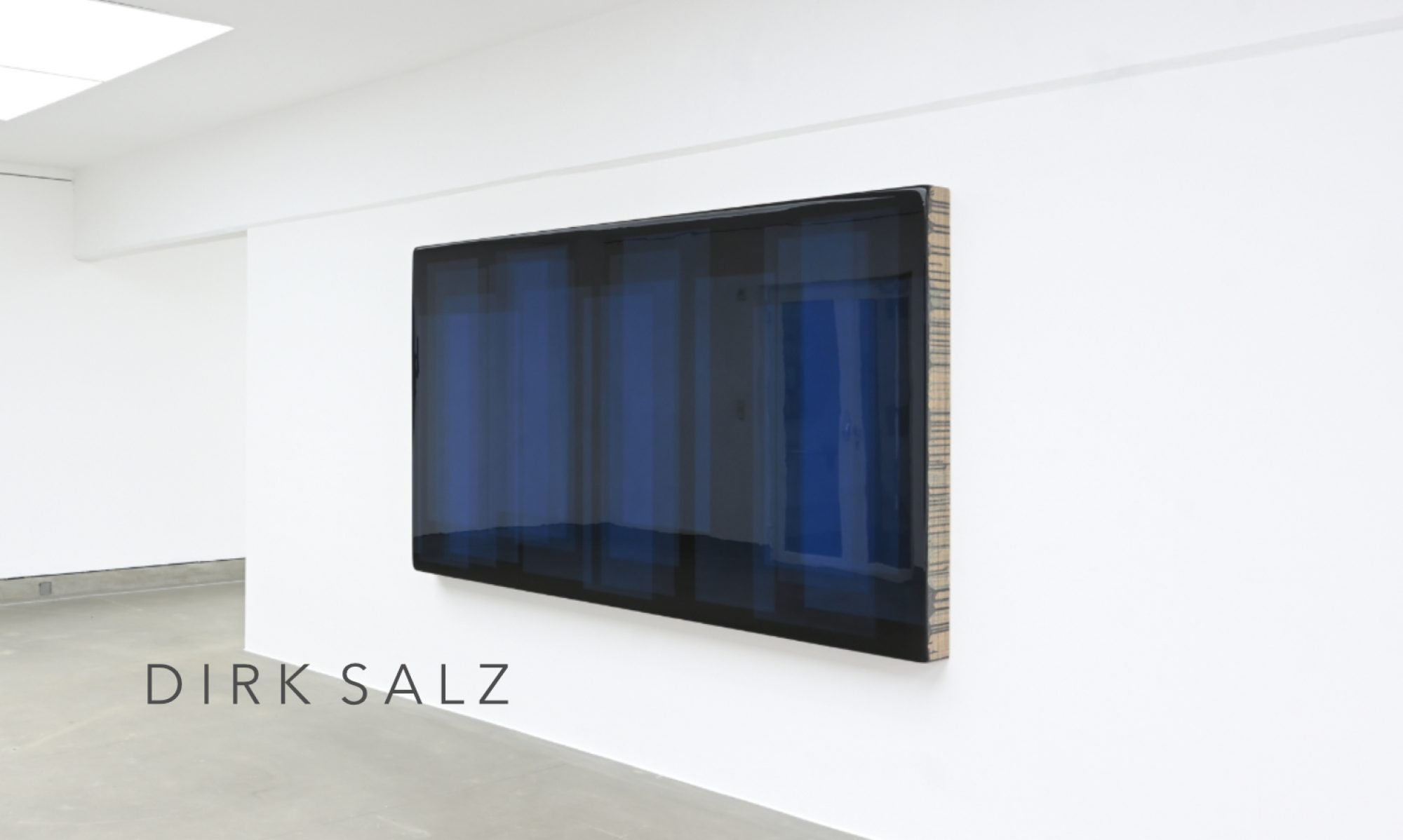by Dr. Gabriele Uelsberg
In his art, Dirk Salz approaches colour painting much like a traditional painter, even though he works with the mindset of a sculptor, completing his paintings as designed volumes. Layer by layer, he develops his pictorial objects from the materiality of various materials including pigments, resins, aluminium and wood. His creations engage in a dialogue with viewers, intensifying their inner infinity, colour and light.
Dirk Salz starts by applying a mostly black ground coat to his picture support, usually made of wood or aluminium plate, then gradually layers pigmented resins over it. This method creates a colour gradient from darkness to light and thus a very natural appearance. The final layer is usually transparent and highly glossy, acting as a threshold through which the viewer enters the artwork and see himself reflected. These reflections are inextricably linked to the artwork, showcasing, in a very ambivalent overall interplay, light as a crucial element in the pieces‘ visual manifestation. Often, side light can cause radial rays to emanate from the edges of the painting, which are projected onto the wall, extending the artwork’s presence into the room beyond its physical boundaries.
The use of pigmented resins gives the colourfulness a material environment in which the individual pigment is enclosed, turning them into reflectors of both light and the viewer’s gaze. The colour-bearing particles seem to float within the semi-transparent resin, creating a three-dimensional air space in the painting’s body, which appears to be filled with coloured light. At the same time, this very transparent yet impenetrably solid materiality of resins makes the artworks closing in on themselves, thus inviting the recipients to engage in a dialogue, in which they almost see themselves mirrored and immersed as a component of the inner colour semantics. The works become hermetic colour batteries that bear the potential to bring out colourfulness in all its complexity.
Salz always selects his materials with a stringent and minimalist approach to surfaces, gradual differentiations, colour reductions. This process is not inspired by contrasting materials and surfaces, but rather the opposite: the materials provide a very subtle credo for a creative minimalism that conveys a maximum of processes in time and space.
From a distance, the surfaces of Dirk Salz’s pictorial designs appear very homogeneous and have an almost cool presence. Only when approaching the image objects themselves do the different layers and overlaps inside become visible. This immediate proximity to the surface creates a suction effect, pulling the viewer into the artworks, which reflect the different structures of painting without revealing them directly.
It is fascinating to observe how the technique of layering and creating a three-dimensional colour space body is accompanied by an absolutely reduced density and thickness of the individual layers of paint, which build up to form such an inner space through glazes and many overlays. To achieve this, parts of the image are masked off and filled with unpigmented resin in the next work step, creating spaces of pure light within the composition. The complex network of coloured fields and shapes, sometimes more transparent, sometimes denser in the overlapping layers, is anything but random. The number of required layers, materials, colours and the sequence of surfaces are precisely planned and laid out in advance. The working steps and directions are complex and prove to be processes of temporal condensation.
Colour, as nature teaches us, is less a quality of the surface and more a characteristic of objects and a condition that applies to more than just the top layer. Colour as a perceptual phenomenon is also an experience in space, occurring not on the surface but in the space between the object of observation and the observer.
When I apply the term „colour space construction“ to the works of Dirk Salz, I consciously recall the works of Gotthardt Graubner, who coined the term „colour space body“. The term is composed of colour space and body, combining seemingly contradictory elements. Visual experience teaches us that colour spaces, unlike bodies, are inherently unmeasurable. In this sense, colour spaces can never represent bodies themselves, and bodies can only inadequately generate colour spaces. Graubner conveys in his colour space bodies – albeit created on canvas and fabric with paint – what Max Imdahl defined as the „interminable experience of an inaccessible phenomenon“. Instead of colour space bodies, the term colour space construction should be used for Dirk Salz’s works, as his layering is also intra-pictorial architecture that not only expand the space but also structure the act of seeing.
